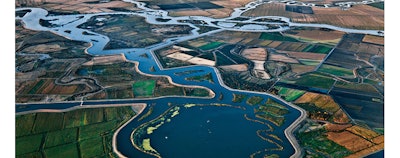
Tuesday, at the White House Water Summit, the National Science Foundation (NSF) joins other federal agencies to emphasize its commitment to a sustainable water future.
Access to affordable clean water is vital for energy generation, food cultivation and basic life support. With drought pressure and population demands, water is an increasingly precious resource.
The California drought and Flint water emergency show some of the consequences of clean water shortages. Low-cost, low-energy technologies for both water quality testing and water treatment must be developed to overcome economic barriers and secure America's future.
NSF supports national efforts to bolster water security and supply by investing in fundamental science and engineering research.
"Routine and reliable access to safe drinking water is one of the greatest achievements in human history, thanks to science and engineering research," said Pramod Khargonekar, NSF assistant director for Engineering. "To ensure this accessibility continues, contributions from all research areas -- from engineering and physical sciences to the biological and social sciences -- are essential. As such, NSF is uniquely positioned to advance water innovations."
For decades, NSF has funded researchers across disciplines to investigate fundamental water questions and propose novel solutions to challenges.
Despite the importance of water to life on Earth, major gaps exist in our understanding of water availability, quality and dynamics, as well as the impact of human activity and a changing climate on the water system. These gaps must be filled in order to create new concepts for water desalination, purification, reuse and treatments.
"To take on the most urgent challenge facing the world today, NSF and our partner agencies are funding researchers to explore interactions between the water system and land-use changes, the built environment, ecosystem functions and services, and climate change through place-based research and integrative models," said Roger Wakimoto, NSF assistant director for Geosciences. "Through these activities, we are enabling a new interdisciplinary paradigm in water research."
NSF-funded demonstrations at Tuesday's White House event:
- An interactive augmented reality sandbox exhibit to help teach the public about watersheds, lake sciences, and environmental stewardship.
- The project, led by NSF-funded researcher Louise H. Kellogg, is a collaboration between university scientists and pubic science centers. Partners include University of California, the Davis W. M. Keck Center for Active Visualization in Earth Sciences, the Tahoe Environmental Research Center, the Lawrence Hall of Science, ECHO Lake Aquarium & Science Center, and Audience Viewpoints.
- A novel technology that uses sound waves to isolate and remove particles from fluids.
- Jason Dionne of FloDesign Sonics Inc. is supported by the NSF Small Business Innovation Research program to commercialize the technology, which offers a potentially more efficient and environmentally benign method to purify water.
- The launch of two "smart markets" for water leasing in the country: for groundwater trading in western Nebraska, and for surface-water trading in central Washington State.
- Mammoth Trading is creating smart markets to automate the process of checking complex regulatory rules for trading and to generate the highest economic gains among participants. By monetizing the value of conserved water, water leases generate a potential new revenue for water users and reward innovation in water use at the farm level. Mammoth Trading's markets will be available in over 500,000 acres of irrigated farmland. Mammoth Trading grew out of NSF-funded research, which was commercialized through the NSF Innovation Corps (I-Corps™) program.
- Mammoth Trading is creating smart markets to automate the process of checking complex regulatory rules for trading and to generate the highest economic gains among participants. By monetizing the value of conserved water, water leases generate a potential new revenue for water users and reward innovation in water use at the farm level. Mammoth Trading's markets will be available in over 500,000 acres of irrigated farmland. Mammoth Trading grew out of NSF-funded research, which was commercialized through the NSF Innovation Corps (I-Corps™) program.
- A book series and curriculum to teach children about the water cycle.
- NSF supports 25 Long-term Ecological Research (LTER) projects across the country and in Antarctica to study ecological processes. The LTER network enables these sites to serve as local and regional "schoolyards" to promote understanding of environmental processes among K-12 students. One outreach tool they employ is the LTER Schoolyard Series, which includes hands-on activity guides and integrates with federal and state science standards.






















